Prebiotic Foods
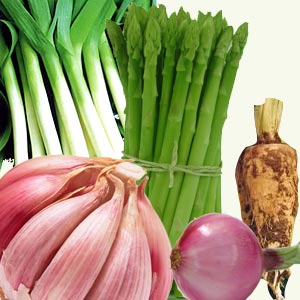
Billions of bacteria that live in the human digestive system are referred to as micro flora, or gut flora. It is a delicate combination of good and bad bacteria. Good bacteria provide digestive support; assist in the breakdown of food into nutrients the body can use. In a healthy digestive system, the good bacteria far outnumber the bad bacteria.
The healthy balance of gut flora can suffer due to internal and external factors. What are prebiotics and their relationship with probiotics? Check how effectively probiotic and prebiotics regulate body micro-environment in a safe and effective way and contribute to overall well-being.
Probiotic
Prebiotics are required for probiotics to thrive. Probiotics eat up prebiotics. Probiotics are foods that contain live, beneficial bacteria. Yogurt is probably the most popular probiotic food. Here are few other probiotic foods.
Dairy products: Yogurt, buttermilk, miso or kefir, cottage cheese and some aged cheese.
Soy products: Miso, Tempeh
Fruits and vegetables: Sauerkraut, kimchi (Korean sauerkraut, Tsukemono (Japanese Sauerkraut), Cortido (Latin American Sauerkraut) and chutney, pickles (Indian).
Others: Wine, sourdough bread, tofu tempeh and tamari.
Probiotics are live microorganisms, native of human gut; which contribute positively to good health.
- Boosts immune system to help combat infections, allergies and exposure to toxins.
- Regulates the digestive system, relieves lactose intolerance and even irritable bowel syndrome.
- Helps with nutrient absorption and converting vitamins and minerals.
- Supports a healthy colon.
- Supports healthy cell activity.
- Helps in maintaining urogenital health.
- Great for skin health and respiratory health.
- Could potentially help with weight loss.
Probiotics perform other functions as well.
- Inhibits growth of 'bad bacteria' that cause diseases.
- Breaks down food for digestion.
- Produces lactase enzyme which helps digest milk sugar.
- Produces vitamins in the intestinal tract.
- Changes the acidic environment in the intestine.
Probiotic food is synonymous with probiotic supplements. The growing demand for probiotic foods can be attributed to two specific reasons.
- We have realized that our diet lacks enough probiotics and can fall below optimal levels.
- Acknowledging that if a positive balance of good bacteria is maintained, the bad bacteria can cause minimal disease and irritation.
Further, even though our body is home to ten times more probiotic bacteria than the body's cells and probiotic bacterial make up approximately 70% of our immune system, it is fairly common to face a situation when probiotics occur in less than optimal levels.
For example, antibiotics not only kill the bad bacteria but also the good bacteria that keep us healthy. Here is a situation that requires replacement of good bacteria that was lost. Probiotics can also be inadvertently killed by high stress levels, unfavorable diet, environmental pollution etc. Taking into account all these factors, recent clinical research recommends including probiotic foods in order to tackle certain illnesses, guard against disease and improve or boost overall health.
What are prebiotics?
Prebiotics are a food source to keep probiotics thriving. Prebiotics consist mainly of indigestible carbohydrates. The general classification of prebiotics includes inulin, fructo-oligosaccharides, polydextrose, arabinogalactan and the plyols lactulose and lactilol.
Be it prebiotics in its natural form in foods, as dietary supplements or through foods fortified with these substances, here is how they work. Prebiotics are typically classified under the term 'soluble fiber'. And, they cannot be digested. The human body does not have the ability to digest prebiotics, so they are passed through the stomach into the intestines where healthy bacteria use them as food through fermentation process to grow and thrive. Prebiotics are essential to keep good bacterial strong. Otherwise, the bad bacteria may proliferate and affect health.
Few sources of prebiotics foods are unrefined/whole grain, certain raw fruits and vegetables like kiwifruit, asparagus, sweet potatoes, banana, apple, the berry family, artichokes, chicory root, yam, barley, beans, tomatoes, legumes, eggplant, garlic, onions, peas etc.
Characteristic features and functions of prebiotics:
- Prebiotics cannot be digested. It is a healthy non-digestible food.
- When consumed it hangs out in the GI tract and feed the probiotics, promoting their growth.
- Prebiotics are heat resistant.
- Prebiotics are found naturally in many foods like raw garlic.
- Prebiotics can be isolated from plants too. (Example: Chicory root)
- Prebiotics can be synthesized (Example: enzymatically, from sucrose).
- Prebiotics fend off harmful or pathogenic bacteria that live in the gut.
- Studies indicate that prebiotics enhance absorption of certain minerals (such as calcium and magnesium).
- Prebiotics may also help inhibit the growth of lesions, such as adenomas and carcinomas in the gut thereby reducing risk factors involved in colorectal diseases.
- Prebiotics do not raise blood glucose nor do they increase insulin release.
Prebiotics health benefits
Increases probiotic growth: Prebiotics provide the necessary environment conducive for good bacteria to multiply and stunt the growth of harmful yeasts.
Protection against colon cancer: Research has indicated that prebiotics may have the potential to stop the development of colon cancer, during the early stage.
Calcium and minerals absorption: There is an increased absorption of calcium from the colon thereby decreasing losses from bone tissue.
Boosts immunity levels: The immune factors within the colon wall are significantly increased; thereby providing the body with significantly better resistance to infection. Allergies and asthma in children are significantly reduced. There is marked improvement in resistance levels resulting in decrease in gastrointestinal infections and respiratory infections.
Effects appetite and weight: A recent study has found that prebiotic supplementation was associated with reduced appetite sensation after a meal or less sense of hunger and more awareness of fullness.
Improved bowel movement: Bowel movements are softer, bulkier and more regular.
Correction of leaky gut: It is a rare condition in which large spaces occur in between the cells that compose the wall of the gut. Since these spaces exist in the gut wall, bacteria, toxins and food can find their way into the bloodstream. Prebiotics strengthen the bowel wall and reduce permeability (leaky gut) with reduced toxin absorption.
Prebiotics products
Though prebiotics occur naturally in fruits and vegetables, why is there a demand for prebiotics products? Because the normal prebiotics level in a healthy diet is 2-3 grams per day, an additional 5-8 grams per day is needed to get a shift in the positive components of the gut flora.
Prebiotics are added to foods such as cereals, biscuits, breads, table spreads, energy drinks, energy bars, candy, desserts, pasta and yoghurts. Be it bread containing prebiotics, cereals, drinks and yogurts or even prebiotic water, here are key factors for consideration while choosing prebiotics product that actually works.
- Check company reputation in choosing prebiotic products and if the manufacturer follows good manufacturing practice regulations.
- Prebiotic products should have essential enzymes to make a positive impact on the digestive tract.
- Prebiotic supplements should contain phenolic compounds, the same natural bioactives that are contained in kiwifruit.
- The phenolic compounds and enzymes should be well preserved through the use of a safe system. If destroyed, the desired health benefits may not be achieved.
- Processed foods like yogurts should have bifidobacteria which in turn contains oligosaccharides (carbohydrate fiber).
- In choosing inulin prebiotics options, consider potency or strength. A high potency, 5-10 grams is an effective dose for digestive support.
Medical experts opine that prebiotics be held below 20 grams, a level that is considered safe to minimize the side effects, if any. Consult your physician before altering your healthcare regimen with a prebiotics product. Though recognized safe to consume, prebiotic products can cause symptoms of abdominal pain, flatulence, bloating, abdominal cramps and diarrhea.
Prebiotics vs probiotics
The two are related to one another but they aren't alike. Both have positive impact on the body and are essential for a healthy digestive tract. But they play different roles.
- Prebiotics are functional food whereas probiotics are the good bacteria in the gut.
- Prebiotics nourish probiotics. Probiotics thrive with the support of prebiotics.
- Prebiotics are not digestible whereas probiotics are found in digestible food sources and are absorbed into the body.
Prebiotics or probiotics
Prebiotics or probiotics - This is a question that comes to mind while choosing supplements in food. Remember, if the body lacks enough prebiotics and probiotics, it can revert to a state of intestinal dysbiosis. But with a prebiotic meal, you are doing good for your bacterial health. If prebiotics and probiotics are combined, they have a symbiotic relationship that may alleviate symptoms associated with gastrointestinal-related illnesses and enzyme deficiency. The synergy will only enhance health and ultimately overall well-being.
Top of the Page: Prebiotic Foods
Tags:#what are prebiotics #prebiotics vs. probiotics #prebiotic foods #prebiotic fiber #prebiotics products #prebiotics benefits
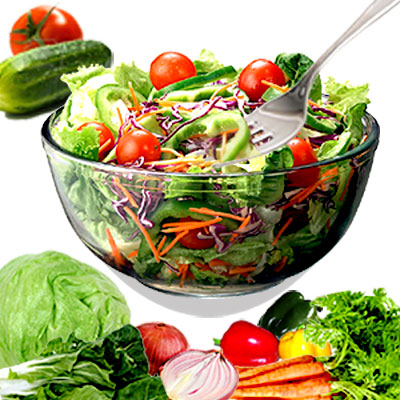 Food and Nutrition Facts
Food and Nutrition Facts Chamomile
Parsnip Soup
Dim Sum
Gazpacho Soup
Whole Grain Cereal
Jicama Nutrition
Bok Choy Stir Fry
Chia Seeds Benefits
Teff Nutrition
Kaniwa
Flax Seed
Wheatgrass Benefits
Kelp Benefits
Types of Chili Peppers
Medicinal Benefits of Pomegranate
Arugula Leaves
Maca Root
Pitaya Fruit
Benefits of Celery
Leek
Asparagus Benefits
Oyster Stew
Oyster Mushroom
Lupin Beans
Quinoa
Freekeh
Extra Virgin Olive Oil
Dill Pickle
Sauerkraut
Fat Burning Foods
Nutrition Chart
Food Combining
Calorie Counter
calories ...
Non Alcoholic Beverage
Punch Recipes
Food Label Nutrition
Homemade Sausages
Cooking Steak
Eating on a Budget
Budget Friendly Recipes
Quick Recipes
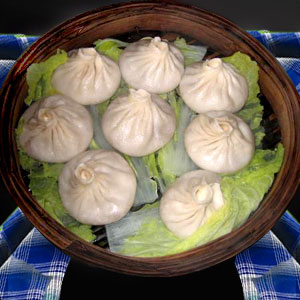 Healthy Packed Lunch
Healthy Packed Lunch Overnight Oats Recipes
Eggplant Casserole
Brunch Recipes
Burrito Recipes
Muffin Recipes
Cupcake Frosting
Apple Crisp
Stir Fry Cooking
Seafood Salad Recipe
Cooking Corn on the Cob
Finger Food Recipe
Sandwich Recipe
Bread Stuffing Recipes
Easy Chili Recipes
Picnic Recipes
Edible Mushroom Recipes
Mushroom Soup Recipes
Dip Recipe
Tapas Recipe
Corned Beef Recipe
Canned Salmon Recipe
Tilapia Recipes
Crumb Cake
Flourless Chocolate Cake
Regional Food
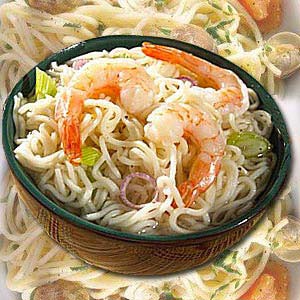 Lasagna Recipe
Lasagna Recipe Peruvian Ceviche
Chinese Food Recipe
Vietnamese Food Recipe
Malaysian Food
Korean Food Recipe
Indian Curry Recipe
Edible Rice Paper
Mexican Food Recipe
Quesadilla
Guacamole Dip
Italian Food Recipe
Spanish Food Recipe
Kosher Food
Falafel Recipe
Tandoori Chicken
Noodles
Canape
Couscous
Meatloaf
Chowder
Gumbo Recipe
Crockpot Recipes
Moroccan Food
Healthy Food
Pre Workout Snack
Matcha Tea
Simple food Swaps to Lose Weight
Foods to Beat Stress
Foods to beat Insomnia
Bone Density Foods
Prebiotic Foods
Kefir Grains
Agave Nectar
Spicy Trail Mix
Pesto Sauce
Homemade Hummus
Crab Cake Sauce
Bamboo Shoots Nutrition
Lemon Grass Plant
Butter Beans Recipes
Loose Green Tea
Seaweed Nutrition
Healthy Food
Low Fat Granola Bar
Steel Cut Oatmeal
Fruit Pizza
Pizza Toppings
Green Smoothie
Healthy Meal Planning
Delicious Mealtime Recipes
Heart Healthy Fats
Healthy Heart Recipe
Healthy Dinner Recipe
Healthy Dessert Recipe
Healthy Fast Food
Healthy Kid Recipe
Probiotic Food
Diabetic Friendly Foods
Fruit Salad Recipe
Bread Pudding
Tofu Recipe
Oat Bran
Broccoli Salad
Avocado Recipe
Iron Rich Food
Brain Foods
Antioxidant Food
Natural Diuretic
Low Fat Cooking Tips
Rice Pilaf Recipe
Low fat Chicken Recipe
Food Tips
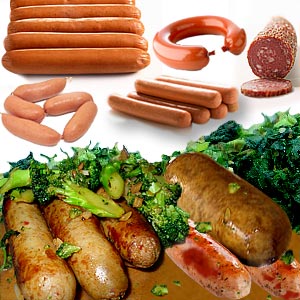
Sous Vide Cooking Technique
Natural Sugar Substitute
Stevia Sugar Substitute
Sunflower Seeds Nutrition
Bouquet Garni
Cake Decorating Tips
High Satiety Foods
Thanksgiving Dinner
Safe Food Storage
Frozen Food Storage Tips
Cold Storage Food Tips
Leftover Recipe
Food Pyramid
Dairy Free Food
Microwave Cooking
Food Intolerance
Homemade Ice Cream
Apple Cider Vinegar
Benefits of Honey
Beverage Cooler
Food Poisoning Symptom
Food Allergy Symptom
Food Addiction
Top of the Page: Prebiotic Foods
Popularity Index: 101,224

